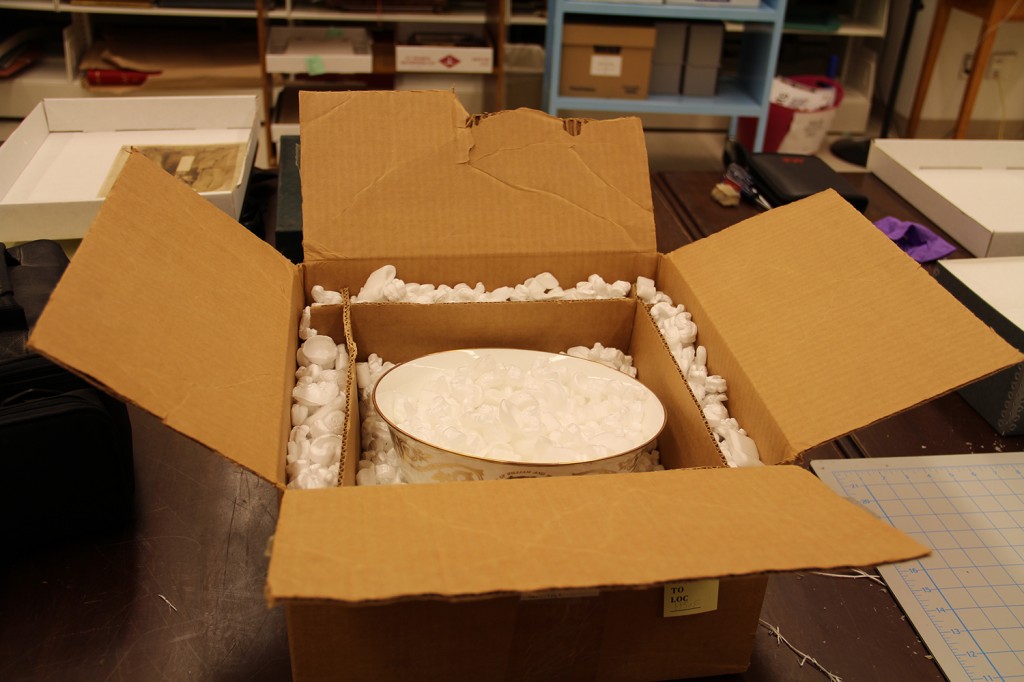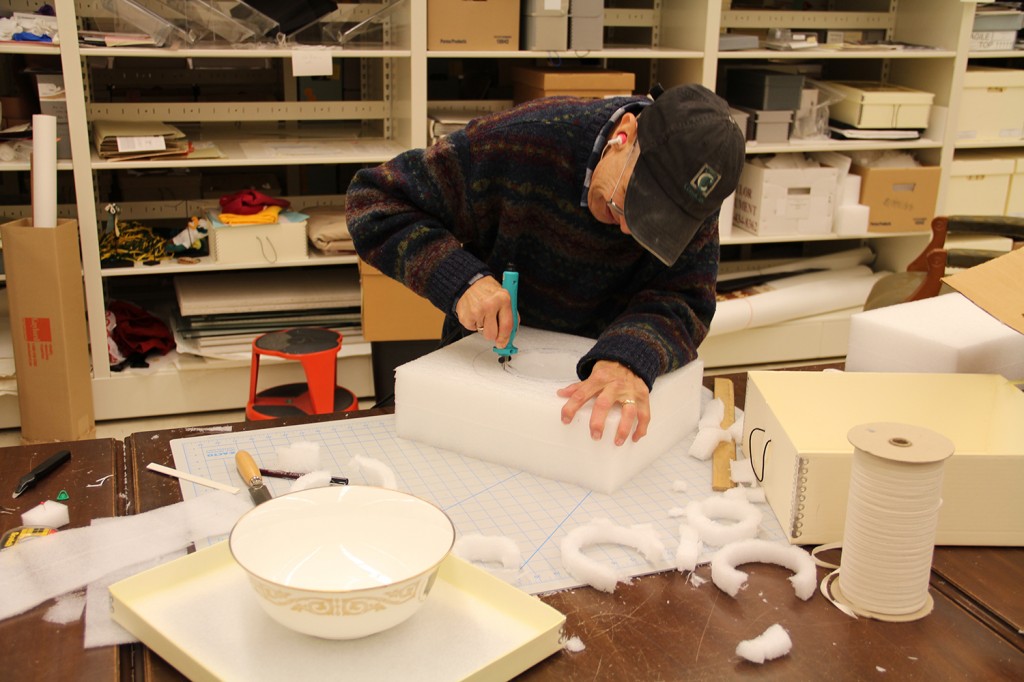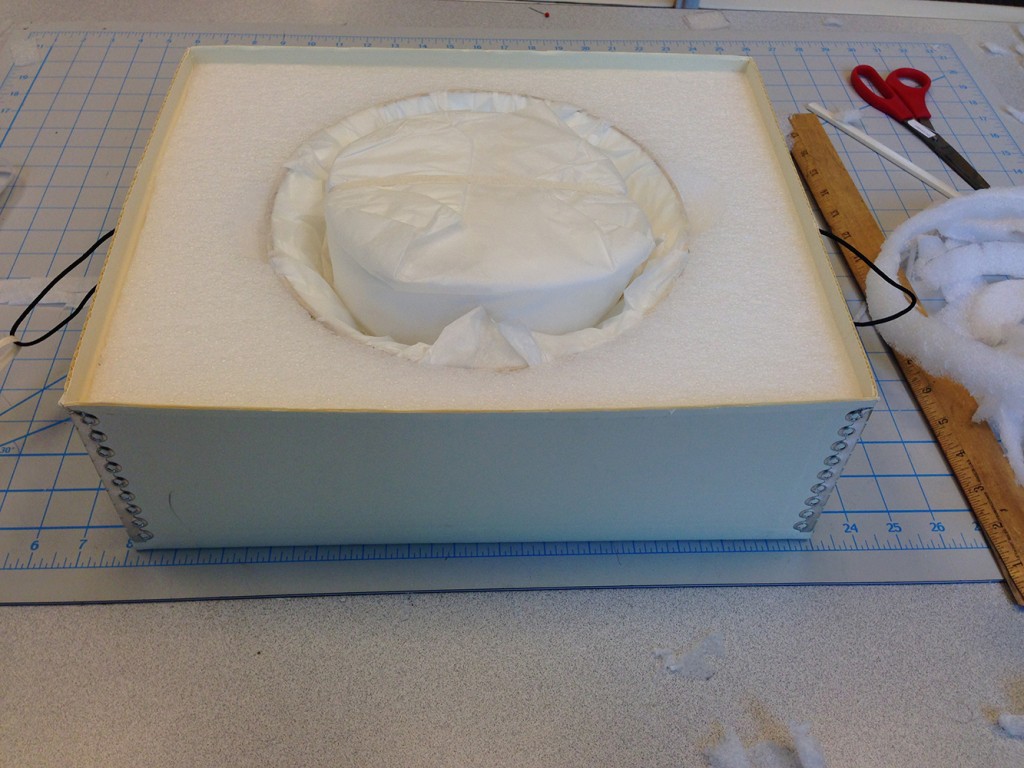From One Box to Another
 Making sure our collections are properly described, housed, and discoverable is an ongoing task in Special Collections. As time goes on, the boxes, folders, and other packing materials we use to store collections wear out or become acidic, and collections require new storage options for their continued preservation.
Making sure our collections are properly described, housed, and discoverable is an ongoing task in Special Collections. As time goes on, the boxes, folders, and other packing materials we use to store collections wear out or become acidic, and collections require new storage options for their continued preservation.
In some cases, their current housing is less than ideal. We have tried prioritizing objects for rehousing based on their fragility, significance, and current housing. The photo above shows the original box for a William & Mary China Bowl, 1981 (UA 1991.034). This bowl was cushioned by packaging peanuts in an acidic cardboard box. While the peanuts helped keep the bowl from moving within the box, they are not safe for storing objects; biodegradable packing peanuts are starch-based and water soluble.

For protecting more fragile objects, ethafoam, an inert polyethylene foam, can be carved out to create a custom support for museum objects. Our volunteer Jerry Limber, a retired pathologist, carefully tailors blocks of ethafoam to match the irregular shapes of various objects, wraps the objects in acid-free tissue paper, and ensures the artifacts are well-protected in storage or when they are transported for use by researchers or library instruction sessions.

If you are interested in learning more about safe materials and packing methods for museum objects or your family heirlooms, check out the "Packing Museum Objects: A Collections Care How To Guide" from the Norfolk Museums and Archaeology Service.

